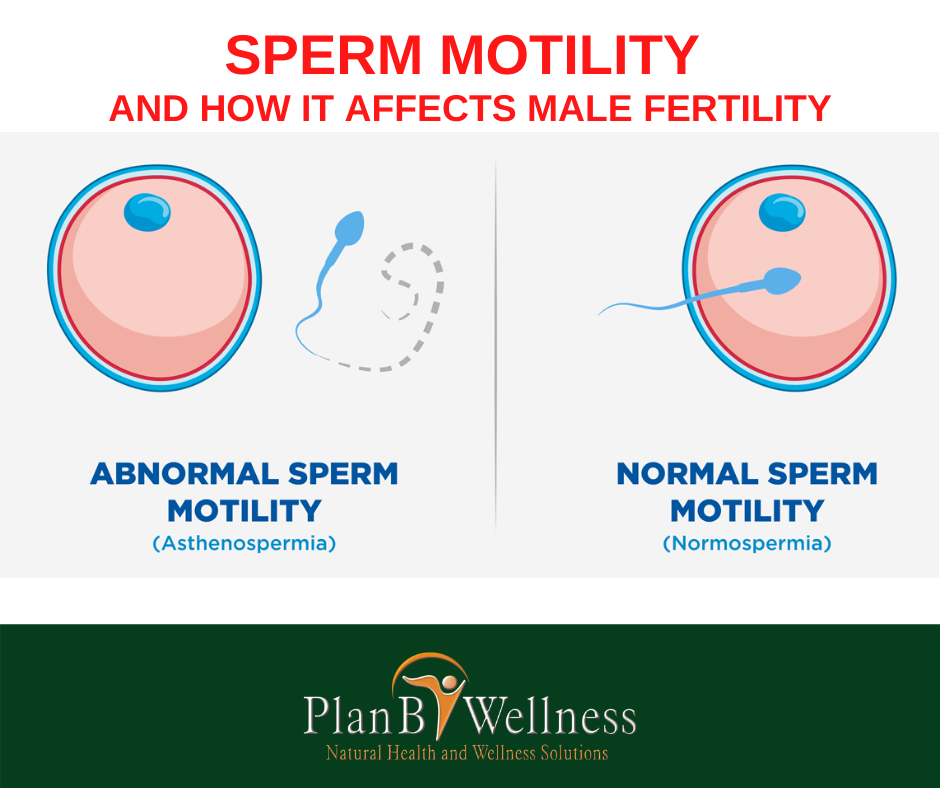An estimated 15–20 percent of couples worldwide are affected by infertility.
Of those, approximately 30–40 percent are infertile due to male factors, including low sperm motility. Another 20 percent are infertile due to a combination of male and female factors.
Sperm health is an important factor in a couple’s ability to conceive and there are six main criteria to watch out for in a healthy sperm:
- volume
- motility
- shape
- ability to pass through the cervical mucus and make it to the woman’s egg
- acrosome reaction
- zona pellucida binding
- nuclear decondensation
A breakdown in any of these criteria can result in male-factor infertility.
Sperm Motility and Pregnancy

Healthy sperm motility is defined as sperm with forward progressions of at least 25 micrometers per second. If a man has poor sperm motility, it’s called Asthenospermia or Asthenozoospermia.
There are different types of sperm motility issues, including:
- slow or sluggish progressive motility
- non-progressive motility, which is defined as anything less than 5 micrometers per second
- no mobility
Sperm cells are called swimmers for a reason. They are one of nature’s great fascinations.
In order to make a baby, they must make an incredible journey traversing toxic obstacles full of dead ends and sneak past white blood cells that stand guard before reaching the awaiting egg of the woman.
For life to happen, a sperm cell must be good at swimming. Unfortunately, there are a lot of things that can cause sperm to not swim very well or not even be able to swim at all.
How Many Swimmers Do You N eed to Make a Baby?

Ultimately, just one. But, that’s the smartass answer.
In reality, fertilization is like a game of darts with bad eyesight. Sperm have some idea of where to go (due to hormones excreted by the egg) but due to the difficulty of the journey, most end up swimming into nothing.
For a better chance of hitting the bullseye, you’d probably want to send in more than one sperm cell.
Andrologists have done a great deal of research to understand the optimal number of motile sperm you’d want to send in.
But, remember, it isn’t a strict number you need to get a woman pregnant, numbers just represent chances of getting pregnant (hitting the bullseye).
In the end, conception can happen against great odds or doesn’t happen even under optimal circumstances.
Studies show that sometimes, pregnancy can take place even with low numbers of motile sperm. It also has been shown to NOT happen even when a man has tons of swimmers.
Sperm Speed and Gender: Fact or Fiction?
It’s long been thought that sperm with Y chromosomes, or “boy” sperm, swim faster than sperm with X chromosomes, known as “girl” sperm.
Studies have proven that this is a myth, however, and there is no noticeable difference in motility or speed between X and Y sperm.
Is My Sperm Motility Normal?

The best answer comes from the World Health Organization (WHO), which reports worldwide measures of semen parameters.
The WHO reports motility only in percentage, so it is difficult to say what the typical total motile count is.
In general, 50% of men worldwide have a total motile percentage above 61%. Only 5% have less than 40% motility measurement, so if you’re below that, this might cause concern.
Motility tends to decrease with age, with it peaking sometime before age 25 and gradually lowering over time.
Additionally, some men experience seasonal variations in their motility measurements, due to the importance of temperature on sperm production.
What Causes Low Sperm Motility?

Genetic factors can produce low or non-existent motility. Some genes that directly make the sperm move (such as proteins in the tail) can be mutated, the production factory in your testicles could be mutated, or some metabolic diseases can cause impaired sperm production by causing your body’s hormones or nutrition to be out of whack, also causing you to make immotile sperm in the testicles.
Next, there’s metabolic and environmental factors. What you eat or what condition your body is in may affect motility. Sickness, poor nutrition, smoking, heat exposure, and toxin exposure all could impact motile sperm count.
Men who work in the military or have jobs that include painting, driving, or repeated trauma to the pelvic area may be at risk for work-induced infertility.
A condition called varicocele occurs when veins inside the scrotum become enlarged. This has also been linked to decreased sperm motility.
Low sperm motility may also be due to a disorder in the male accessory sex gland secretion, which leads to the glands emptying more slowly.
Diagnosis

Sperm motility can be tested through a routine semen analysis.
For the test, you’ll need to provide at least two semen samples. These are usually obtained by masturbation at a doctor’s office or testing facility.
It’s also possible to obtain a sperm sample by having sex with a condom or withdrawing to obtain the sample.
The sample must be kept at room temperature and delivered to the facility within 30 to 60 minutes.
If less than 40 percent of your sperm are motile, you are considered to have low sperm motility.
In addition to sperm motility, your doctor can also use a semen analysis to test:
- the health of the male genital tract
- accessory organs
- ejaculation
What Can Be Done About Low Sperm Motility?
If you’ve found you have genetic-based reason for low motility, treatment might be possible for some hormonal disorders, but often you’d need to resort to assisted reproduction techniques if you have a genetic reason for low or no motility.
Environmental factors can be changed, and that sometimes has an impact on sperm count and motile count.
Avoiding cigarettes, alcohol, heat, and eating healthier can sometimes improve motile count. Some supplements can also boost motile counts.
Antioxidant vitamins, such as Vitamin A, E, or C can have a positive impact on motility.
Vitamin D promotes the factors that directly cause sperm tails to wiggle, and intake of that vitamin can also have benefits for your motility.
Herbal remedies such as the one here (click here for details) have also been proven to help overcome low sperm motility naturally without any negative side effect.
Keep in mind, that when you are getting checked up on your semen parameters, that motility count is super important, but it is not the sole deciding factor in your ability to get a woman pregnant.
Treatment for Low Sperm Motility

Some lifestyle changes may help increase sperm motility for some men:
- exercise regularly
- maintain a healthy weight
- limit cell phone exposure
- reduce alcohol
- quit smoking
Some therapies have also been found to be really helpful in helping men overcome low sperm motility.
One of such is the one explain here (click here for details). It gives a holistic approach to overcome male-induced infertility of any type.
Hope you gained a few things from reading this. Do not hesitate to share it with others too.
Stay healthy and never give up!
Plan B Wellness
+2348099666658, +2348099666648 (Whatsapp, Call, SMS)
+2348099666650 (Call and SMS only)
Email: consult@planbwellness.com
IG: @planbwellness
Twitter: @planbwellness







Can one still use it even if one sperm is okay, to procude baby?
Thanks for your comment. There is no need to use anything if there is no issue with your sperm.
If you feel there is any issue, the first step to take is to run a semen analysis test before thinking of using anything.
Hope this helps.
Thanks